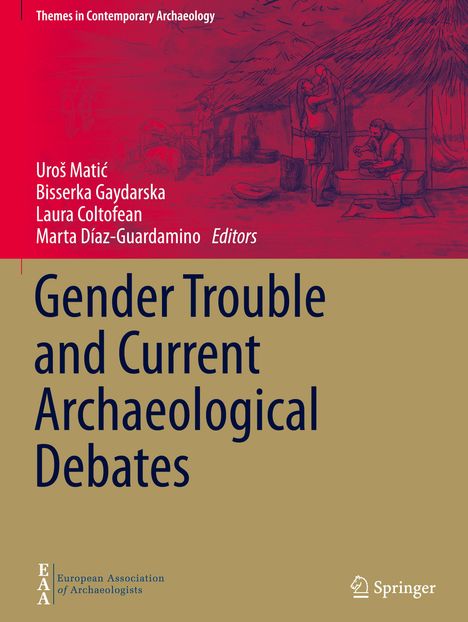Gender Trouble and Current Archaeological Debates, Gebunden
Gender Trouble and Current Archaeological Debates
- Herausgeber:
- Uro¿ Mati¿, Bisserka Gaydarska, Laura Coltofean, Marta Díaz-Guardamino
- Verlag:
- Springer International Publishing, 10/2024
- Einband:
- Gebunden, HC runder Rücken kaschiert
- Sprache:
- Englisch
- ISBN-13:
- 9783031681561
- Artikelnummer:
- 12052165
- Umfang:
- 184 Seiten
- Gewicht:
- 717 g
- Maße:
- 285 x 215 mm
- Stärke:
- 16 mm
- Erscheinungstermin:
- 29.10.2024
- Hinweis
-
Achtung: Artikel ist nicht in deutscher Sprache!
Klappentext
This volume challenges the status quo by addressing a selection of intensely discussed themes in contemporary archaeological practice from a gender perspective. It aims to demonstrate that gender is intrinsic to archaeology and that gender archaeology can enrich our studies, irrespective of the discipline¿s possible future directions and so-called paradigm shifts. The scholarly contributions commissioned for this volume critically discuss and reflect on a wide range of concepts, ideas, principles and theories presently applied in archaeology within the framework of gender.
The chapters included in the first part deal with themes in world archaeology that have little or no focus on gender, such as the Third Science Revolution (e. g. ancient DNA, stable isotopes analyses, big data), posthumanism (e. g. new materialism, symmetrical archaeology and the ontological turn) and digital archaeology and heritage. The second part focuses on themes in which gender archaeology has made serious advances (intersectionality, social inequality, violence, mobility). The third part deals with themes crucial for contemporary archaeology and society, namely, gender education, gender representation in museum exhibitions and the future of gender archaeology. The volume concludes with a coda chapter that critically assesses the preceding contributions and the volume as a whole. The book offers a gender-balanced and inclusive authorship consisting of both well-established and early career researchers closely connected to the EAA, whose professionally, culturally and geographically diverse backgrounds and experiences enrich the viewpoints discussed in the chapters. The targeted audience is archaeologists from all theoretical and scientific backgrounds at all stages of their career.


